Types of Lockout Tagout Devices [Quick and easy]
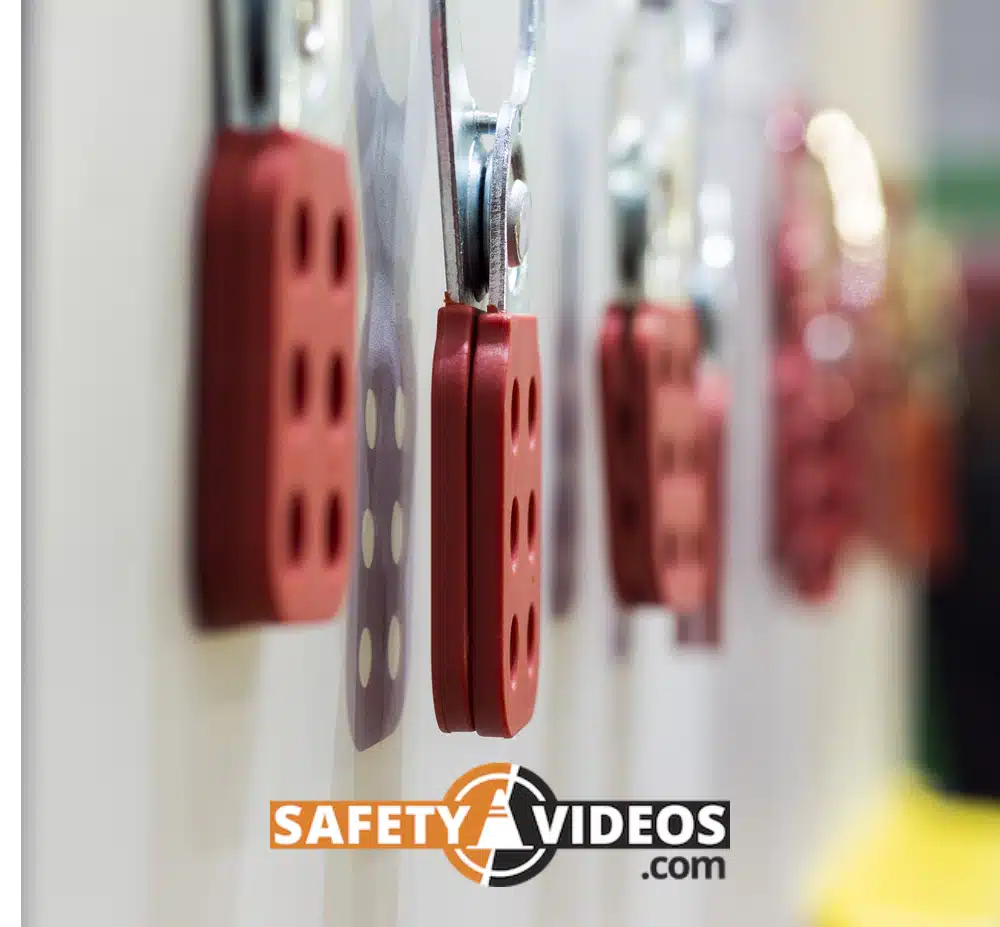
As a business owner, it’s critical to prioritize workplace safety. That means complying with Occupational Safety and Health Administration (OSHA) regulations, including lockout and tagout procedures. With that come many different types of lockout tagout devices.
During maintenance or repair, a lockout tagout program (LOTO) is a safety procedure for shutting down potentially hazardous sources, such as energized machines or a live facility.
Different safety methods are available, which will help you satisfy regulation compliance. In addition to this write-up on the devices used in lockout tagout, we also have a lockout tagout training course that you should check out as well.
Energy Isolation Lockout Tagout Basics
An energy isolation device is a safety feature for turning off a power source. LOTO devices can be attached to ensure it stays off, which consists of a specific lock for the type of work. Performing a lockout tagout has very specific steps that need to be completed.
When you see a tag on a machine or piece of equipment saying “Do Not Operate,” that’s called tagout. The tag indicates the machine is undergoing work, and it’s only safe to use once the tag is removed by the person who put it there.
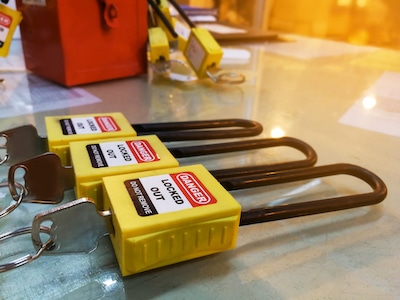
Hazardous Energy Sources
Equipment should be isolated from specific hazardous energy sources to ensure the equipment is not accidentally turned on, releasing potentially dangerous energized power which could cause harm or death.
Energy sources can include:
What Are the Different Types of Lockout Tagout Devices?
If you work with any listed energy sources, you must implement a lockout tagout program. Different LOTO devices exist for various equipment and facility machines. Knowing them can help you choose the right ones for your workplace.
The following introduces some devices commonly used throughout various industries:
What Are 4 Common Types of LOTO Devices?
The main types of devices you may encounter include:
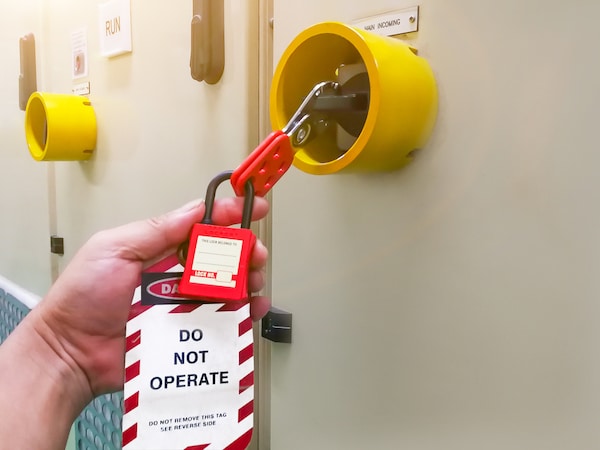
Valve Lock System
This type will physically prevent valve operation, ensuring that no one can accidentally or intentionally release dangerous chemicals during industrial repairs or maintenance. These come in several different varieties, including ball valves, butterfly valves, and gate valves. They are meant to stop the flow of material being controlled by the valve.
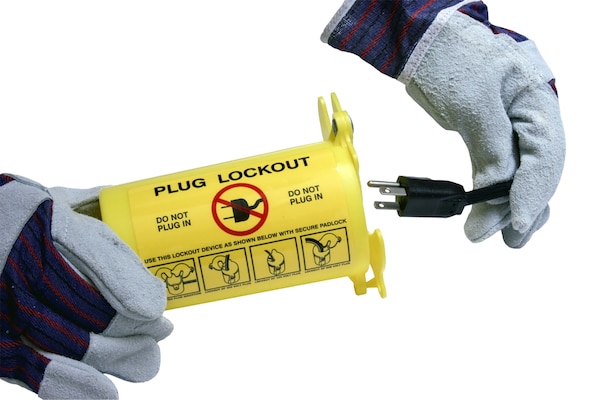
Adjustable Cable Lockouts
This type helps lock valves or panels that are difficult to reach. They are versatile and easy to install. Just loop and tighten the cable through the lockout points to secure a device. These are usually long adjustable cables and a lockout body with a built-in key lock.
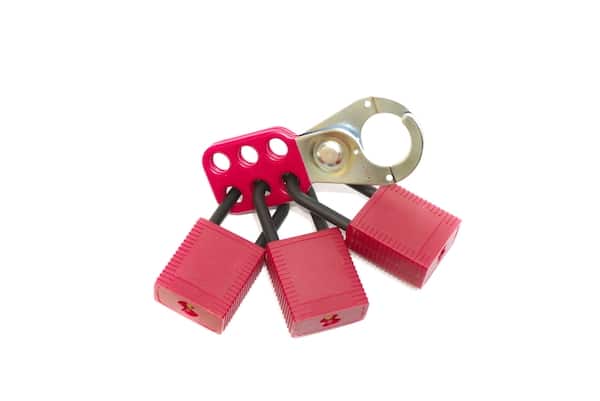
Hasp
This device allows multiple workers to perform work on a single machine. Each worker can attach their lock and tag to the hasp, ensuring their safety. Once their task is completed, they can remove their LOTO device until all of the locks are gone. Hasps have multiple holes so each worker can attach their lock, indicating that they have locked it out. This shows that multiple employees have control over and work on the device.
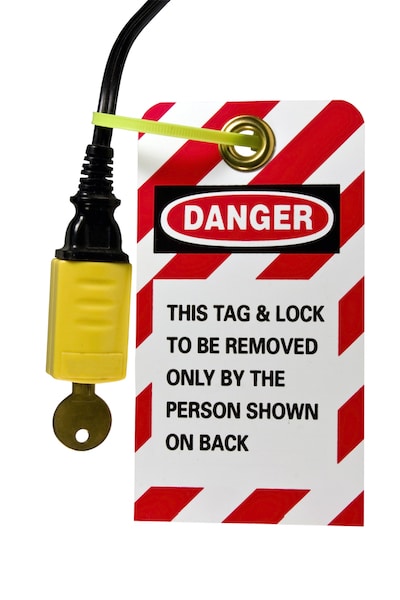
Electrical Plug Lockout Device
There are different solutions to safely prevent someone from using a specific corded device. These are also called plug lockout devices or cord lockouts. These devices are designed to enclose or secure an electrical plug.
Additional Electrical Lockout Devices
Other devices include:
LOTO Padlock
These are standard lockout devices for securing electrical systems. The workplace or facility should provide lockout padlocks, which must be distinct from other locks and identifiable with the user’s name.
The safety padlock must be able to stay locked and secured before you can remove the key. If you’re using this type, they should not be keyed alike.
You also should NOT let employees share these locks because multiple people could open them, increasing the risk of an accidental re-energized source.
How Does a Lock Box Work?
Lockboxes ensure it’s safe to begin work in a group setting.
After turning off the power source and using a LOTO procedure to keep it off, individuals must place the key to their lockout tagout devices in the lockbox. Then, they put their lockout padlocks on the box.
When everyone secures their personal padlocks, the group leader adds an orange or blue lock and an orange tagout device on the equipment to ensure LOTO safety.

Documentation of Lockout Tagout Procedures
Keep records of everything related to lockout tagout. That means documenting policies, procedures, inspections, education, reports, and audits.
Consider using digital documents instead of paper to keep all this information in one place. Doing so will make it easier to maintain a sustainable lockout tagout program.
Selecting and Training Employees Authorized to Use LOTO Procedures
To ensure a compliant lockout program, incorporate an education program. Everyone needs instruction on when to apply energy control procedures, and maintenance teams must also be qualified to use them.
Note: Different lockout tagouts require different levels of education.
§3314 Service Requirements
The power source must be disconnected per OSHA requirements when cleaning or servicing machines with moveable parts. Also, parts shall be mechanically blocked or locked to prevent unintentional movement or the release of hazardous energy into the facility.
Each person must use their lockout tagout device when servicing equipment.
Following lockout tagout guidelines is required to stay OSHA compliant. It will also help keep employees safe and secure when working around an electrical system or other energized machinery.
For lockout tagout methods to work correctly during maintenance, employees need to know whether they are considered authorized employees or affected employees by the lockout tagout process.
Final Thoughts
It’s crucial to prioritize occupational safety to prevent injury and loss of life. Individuals who service equipment are at the most significant risk, but compliance with standards can prevent up to 120 fatalities and 50,000 injuries annually.
Individuals who suffer injuries from hazardous energy exposure lose an average of 24 workdays for recuperation. Various methods are available to ensure safety, including custom-built options for different needs and situations.
Let’s prioritize safety and prevent accidents in the workplace by using whichever lockout tagout device is appropriate for the job.
FAQs
What are the devices of LOTO?
The comprehensive basic list includes the following:
- Padlock
- Electrical Lockout Tagout
- Valve Lockout Devices
- Cable Lockout Tagout
- Steering Wheel Lockout Devices
- Flange
- Gas Cylinder
- Pneumatic
- Hasps
- Group Boxes
- Lockout Tagout Tags
- Stations & Kits
- Confined Space Covers
- Inspection Timers
Here are five basic steps to keep in mind for lockout tagout steps:
- First, find all the energized sources and identify the appropriate methods to isolate them.
- Next, use the device to block or isolate the equipment’s power source.
- Ensure the energy-isolating device is in a safe position where energy won’t accidentally turn on or off.
- After that, you must deal with any remaining energy you couldn’t isolate by releasing or restraining it.
- Finally, verify that the equipment is turned off and safe.
What are the occupational safety steps to control hazardous energy?
An efficient OSHA program involves proper energy control procedures, employee training, regular audits, and equipment that allows LOTO before service or maintenance.
By using these lockout tagout steps, workers can safely maintain and stop the release of hazardous energy.
What is the OSHA standard for control of a hazardous energy source?
The OSHA Standards Title 29 Code of Federal Regulations (CFR) Part 1910.147 addresses the practices and lockout procedures necessary to disable machinery or equipment.